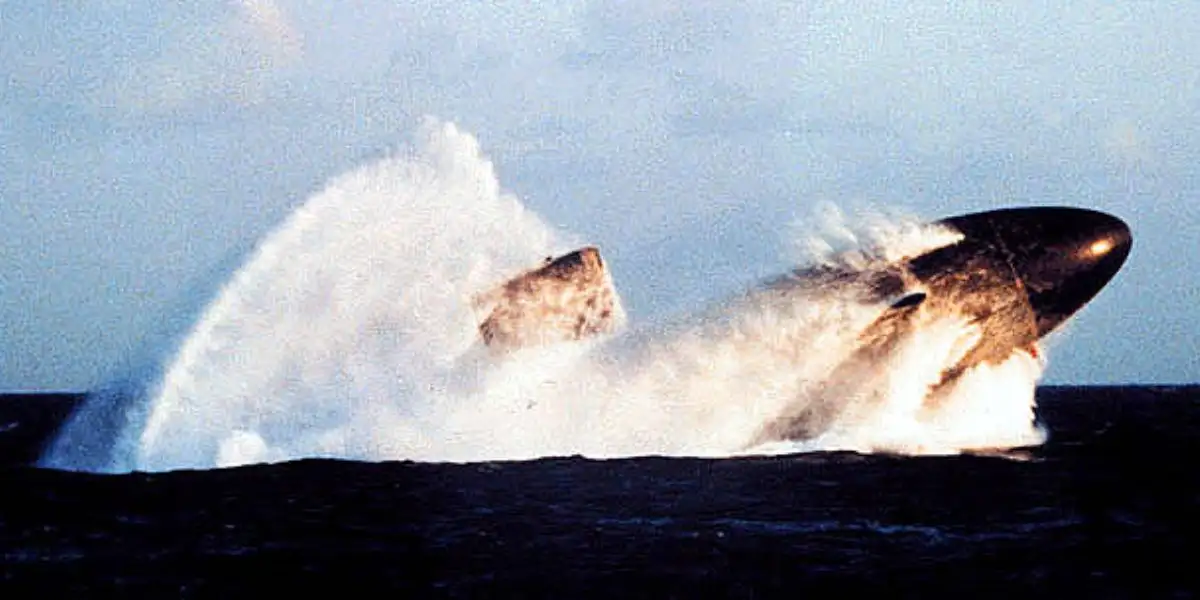Submarine Emergency Blow
An emergency main ballast tank blow is a procedure used aboard a submarine that forces high-pressure air into its main ballast tanks. The high-pressure air forces ballast water from the tanks, quickly lightening the ship so it can rapidly rise to the surface.
Serving on a US Navy submarine crew takes courage, stamina and deep expertise — literally.
But what’s like to be in a submarine during an emergency blow?
Timothy Mauch, former US Navy Submarine sonar Chief Petty Officer, explains on Quora;
‘An Emergency Blow is FUN!!! It beats any ride at any amusement park!
‘I was a member of the Pre-Commissioning Unit (PCU) of USS Henry M. Jackson (SSBN-730) in 1984. The PCU is the people who will be the first crew when a boat is commissioned. Before commissioning, every ship or boat in the Navy goes through several “sea trials” where EVERYTHING is tested. Of course, that includes the Emergency Blow system.
‘This system is designed to allow a damaged submarine to surface when everything else is broken (a submarine surfaces by blowing all of the water out of the Main Ballast Tanks (MBT), giving it a lot of positive buoyancy).
Totally pneumatic
‘The system is totally pneumatic. You don’t need hydraulic power. You don’t need electricity. It doesn’t use any other system on the boat. It’s totally independent. The high-pressure air (several thousand psi) is stored in air banks (rows of air flasks) inside the MBTs. The air goes through huge pipes (several inches in diameter) through pneumatic valves, to dump into the tanks. Those valves are pneumatically operated, remotely, by mechanical valves in the Control Room, above the Ballast Control Panel. We call them “chicken switches.” (Submariners have a strange sense of humor).’
He continues;
‘When the order to Emergency Surface is given, the Chief Of the Watch (who is responsible for moving ballast around the ship) sounds the emergency surface alarm (ahh-OO-gah! ahh-OO-gah! ahh-OO-gah! just like in the movies) and throws (opens) both valves. Other control stations take the appropriate actions to maintain control during the ascent, the boat takes a large up-angle, and it feels like an express elevator (a 560 FOOT LONG ELEVATOR. Imagine THAT!) When the bow breaks the surface, momentum keeps it going up until there’s enough weight out of the water to bring it crashing back down.
Being aboard
‘If you watched the movie Hunt For Red October, that was a real 688-class boat (not a model or prop) doing an actual Emergency Blow, just for the movie. Yes, the studio paid the Navy for that. The handles the Chief pulled were the actual ones (not a set).
‘Now imagine being aboard. The pipes are at the furthest point in the bow and stern of the pressure hull. In the bow, that’s the Sonar Equipment Space (my working area). That is the place where you feel the most motion and acceleration (like a roller-coaster). Also, as the high-pressure air expands while going through the pipes, the pipes get very cold, very quickly (a physical property of expanding gases) and frost forms on the surface of the pipes. (yes, they’re very cold to the touch. I touched them).’
Mauch concludes;
‘Finally, the passage of air through the pipes is EXTREMELY LOUD! If you don’t wear hearing protection, it could damage your ears. Rock concerts are QUIET!
‘14 years in the Navy, and I only did it once.
‘WHAT A RIDE!!!’

Photo by U.S. Navy

